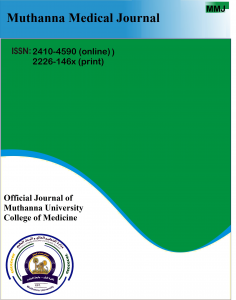
Research Article 
Muhammed Hassen Jaafar 1, Safaa. Ibrahem Khadem², Asaad Jabber Alrubaie2
Abstract
Undescended testis is the most common genital anomaly that affects infants and boys. It has
serious complications if left untreated at the proper time. The aim of treatment is to replace
the testis to its normal scrotal position where normal testicular development and
spermatogenesis occurs. A total of 60 patients with undescended testes were enrolled in this
prospective study that extended over three years. Ages with the mode of presentations,
methods of identification (physical examination vs. ultrasound study), types of surgery and the
results of histopathology were all reported. Only 10 patients (16.6%) presented within the
recommended time of surgery (< 2 years). Regarding the mode of presentations: for 26/60
patients (43.3%) the pathology was detected by their parents, 6/60 (10%) were detected by
the patients themselves and the remaining 28/60 (46.6%) presented with complications.
Identification and localization of the undescended testes were made clinically in 55/60
patients, whereas only in 41/60 patients were the undescended testes detected by ultrasound
examination. Overall, 48/60 patients (80%) were treated by orchiopexy and 9/60 patients were
treated by orchiectomy. The histopathology of the excised testes revealed permanent
testicular damage in all the specimens. In-Conclusions: There is a lack of enough public
awareness about this problem and its complication in our society. Orchiopexy at the proper
time effectively prevents testicular damage, whereas orchiectomy is reserved for neglected
damaged testes to avoid serious complications.
Keywords: Undescended, Testis, Orchiopexy